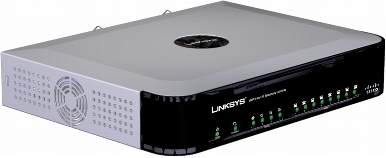VoIP Gateway Information
The VoIP Gateway is an advenced version of traditional gateways. It uses Internet Protocolls in order to forward the voice and other media data on the Internet. These VoIP Gateways always have interfaces to connect IP Networks, standard Public Telephone Networks and ATM (Asynchronous Transfer Mode) networks.
Through a configured VoIP Gateway you can connect your traditional analog signal with modern digital datasource. This way it helps to make a greater set of the supported communication channels. In this case not only voice, but other media data can be forwarded on the built channel.
The Ethernet interface makes it possible to forward the VoIP calls through a VoIP gateway with a modern PBX.

Most companies use VoIP Gateways, because with the help of this device they can cut down the communication costs within their far offices.
The well-configured VoIP Gateways on the endpoints makes it possible to change the usual and expensive phone calls to communication through the Internet, that effects better quality and lower costs. You don not need to left your traditional phone devices, of course you can connect them into your telephone system.
Moreover, if your company would like to make outbound calls, you can find a lot of VoIP Service Providers. They often offer lower costs than local Service Providers.
Summary: The VoIP Gateway can be the pillar of your company's digital and analog communication. You can use traditional telephones, FAX machines, modern VoIP Phone etc. It does not matter whether they are far or close to each other, you can connect them into the same PBX. With these steps you will earn controllable, better quality, and cheaper home or business communication channel.
You can check ATA Devices that are supported by Ozeki Phone System.
If you have any questions or comments please do not hesitate to contact us at info@ozeki.hu
Related pages:
More information
- T.38 fax
- STUN Server
- RTP
- PBX Phone System
- What are SIP Phones
- VoIP Defined
- IP PBX, SIP
- What is an Auto-attendant
- What are the Benefits of an IP PBX VoIP Phone System
- What is FOIP Fax over IP
- What is ECHO Cancellation
- What is a Good Source of VoIP Info
- What does ENUM mean
- IP PBX: How an IP PBX / VoIP Phone System Works
- Example of SIP Call Session Between 2 Phones
- VoIP Gateway Information
- VoIP Definitions
- What Different Types of CODECS are There
- What SIP-based IP PBXs are Available
- What Do the Terms FXS and FXO Mean
- What is a SIP-URI
- What is IVR / Interactive Voice Response
- What is SDP Session Description Protocol
- What is a SIP Server
- Sip Phones / VoIP Phones Types
- What is SIP Session Initiation Protocol
- What are IP Phones / IP Telephones
- Microsoft Response Point vs Ozeki Phone System
- What is H323
- What is DID Direct Inward Dialing
- What is a Voicemail System
- What is a VoIP Telephone
- How Does FAX Work in VoIP Environments
- What is SIP Forking
- What are SIP Methods / Requests and Responses
- What is RTCP Real Time Transport Protocol
- 10 Reasons to Switch to an IP PBX
- What are the Benefits of an IP PBX
- What is Unified Communications
- What is Fax to Email
- What is Voicemail to Email
- What is a VP8
- What is a WebRTC
- What is Web Conferencing
- What are BLF Function Keys
- What is ATA?
- What is Bandwidth?
- What is Broadband?
- What is a Cable Modem?
- What are the Circuit Switched Networks?
- What is CNG?
- What is Data compression?
- What is Downstream?
- What is Frame Relay?
- What is IM?
- What is ISP?
- What is IP mapping?
- What is IP telephony?
- What is Jitter?
- What is Kbps?
- What is Lag?
- What is Latency?
- What is MGCP?
- What is MRC?
- What is NANP?
- What are Net Phones?
- What is NOC?
- What is Packet lossing?
- What is Packet Switching?
- What are Packet Switched Networks?
- What is P2P?
- What is POTS?
- What is a Router?
- What is Sampling?
- What is a Service provider?
- What does Upload mean?
- What is Voice chat?
- What are VoIP services?
- What is a Webphone?
- What is a WiFi Hotspot?
- What is a WiFi Phone?
- What is VoIP

 Sign in
Sign in